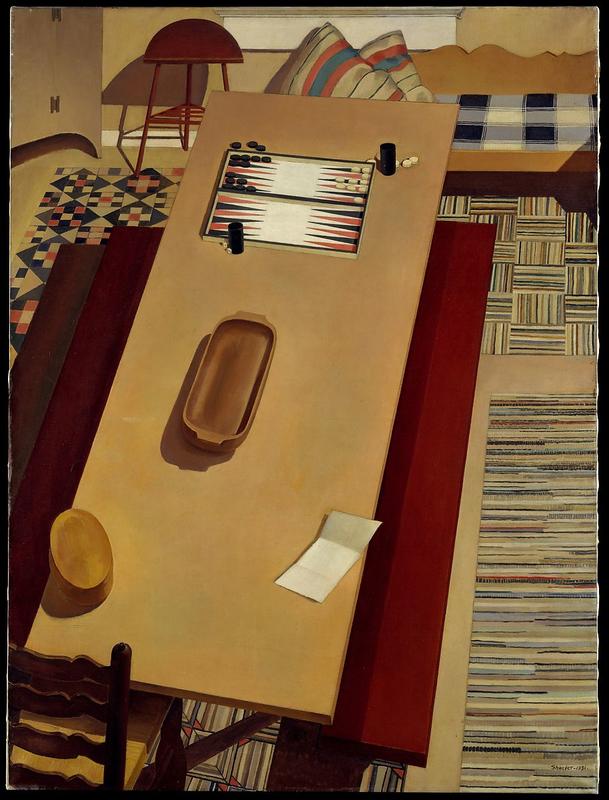More about Americana

Contributor
Charles Sheeler’s Americana is a nostalgic look at American culture during one of its darkest financial times.
It’s 1931. Everyone’s out of work and people are starving. Lines are down the block and around the corner for the soup kitchen. Parents are struggling to provide for their children. Despite it only being a few years, this depression feels like it’s forever. Things used to be different. You used to be able to not only survive, but thrive. But not any more. The idea of leisure is a distant memory. The only thing on your mind now is how you’re going to get your next meal.
Americana by Charles Sheeler was painted in the middle of all of that, yet it doesn’t feature themes consistent with the time. It’s not dark, gray, and somber. It’s vibrant, brought out with its reds and yellows, and meticulously detailed patterns.
The American dream is something that’s always been prevalent in this country. Most of us think of it as the post WWII version of having a good paying job, a house, a spouse, and 2.5 kids. But at its heart, the American dream is simply about not having to do without. It’s about being comfortable and then some. It’s about being able to do and have what you want. Sheeler tries to capture that version of desire with Americana. The title instantly frames the audience with a particular perspective, and the objects that inhabit it are uniquely American for the time.
The comfy sofa. The multitude of rugs. And the set of backgammon on the table. The attention to detail Sheeler puts in his patterns is something to take note of. The rugs, the pillows and throw on the sofa, and the backgammon set all have entirely different and sharp patterns. But these erratic patterns do a lot of the legwork in making the viewer feel at home. These are versions of things that people would have had in their own houses at some point. Sheeler is trying to tap into a form of national pride with all of this, hoping to stoke the same sentiment into the eyes and hearts of the audience.
Sheeler painted in a style called Precisionism, along with other artists of his time like Georgia O’Keeffe and Charles Demuth. Precisionism is kind of exactly what it sounds like. It’s an artistic style of painting where something is conveyed in as realistic way as possible. But it has emphasis on shapes, which links it to a form of cubist realism.
Sheeler’s Precisionism and the angle at which this painting is painted, really allow the viewer to inhabit the space within the confines of the frame. I’m not sure what struggling man or woman during the Great Depression would have had access to a painting like this. But if they did, they would easily be able to insert themselves within the scene. Almost like they walked through a door into another room filled with familiar things that remind them of a more simple and stress free time, and they could for that brief moment escape the anxiety and worry that inhabits their day and just relax. It’s kind of like Great Depression virtual reality.
Sources
- The Antiques. “Finding a Past for the Present.” March 29, 2020. https://www.themagazineantiques.com/article/finding-past-present/
- The Art Story. “Charles Sheeler Artworks.” Accessed January 16, 2020 https://www.theartstory.org/artist/sheeler-charles/artworks/
- Britannica. “Charles Sheeler: American Artist.” Accessed January 16, 2020. https://www.britannica.com/biography/Charles-Sheeler











